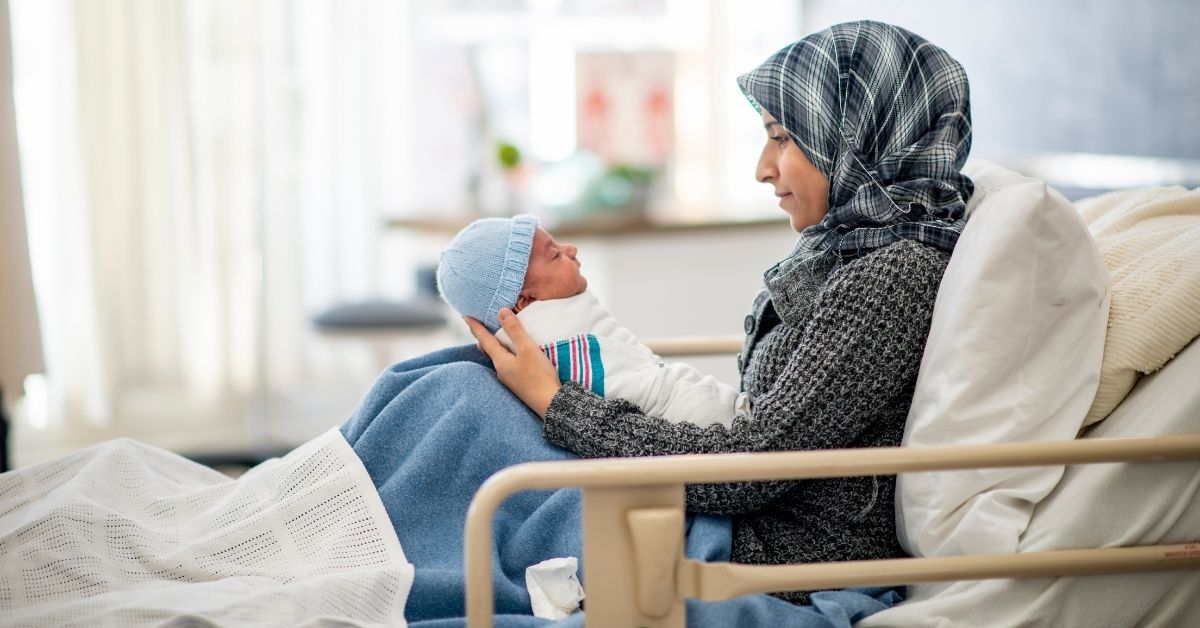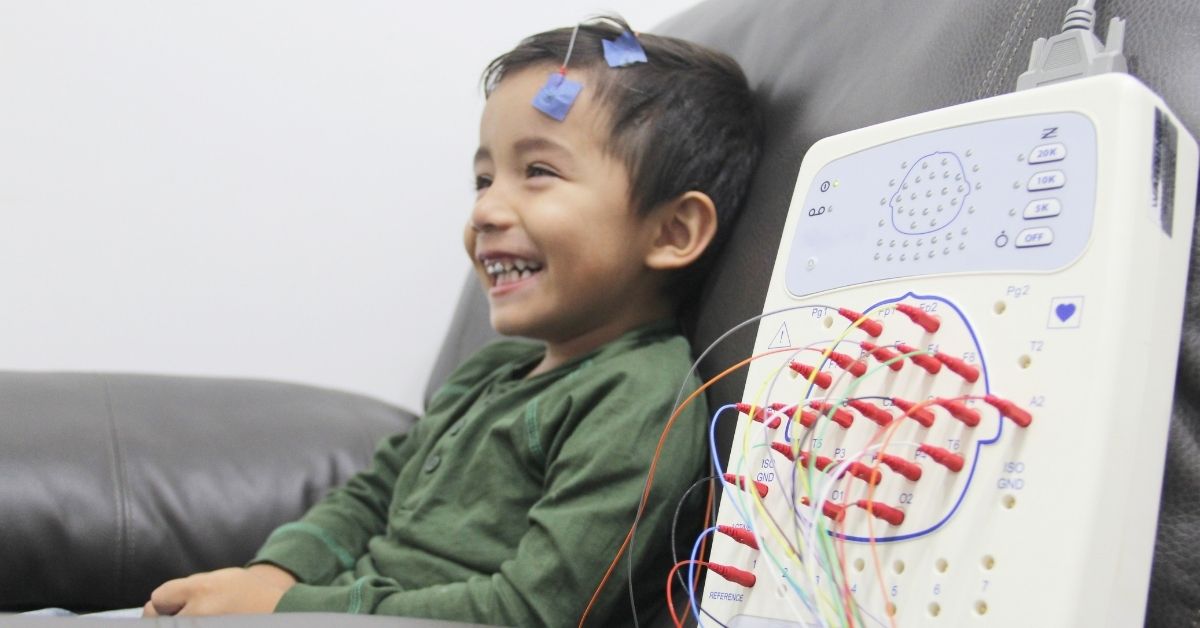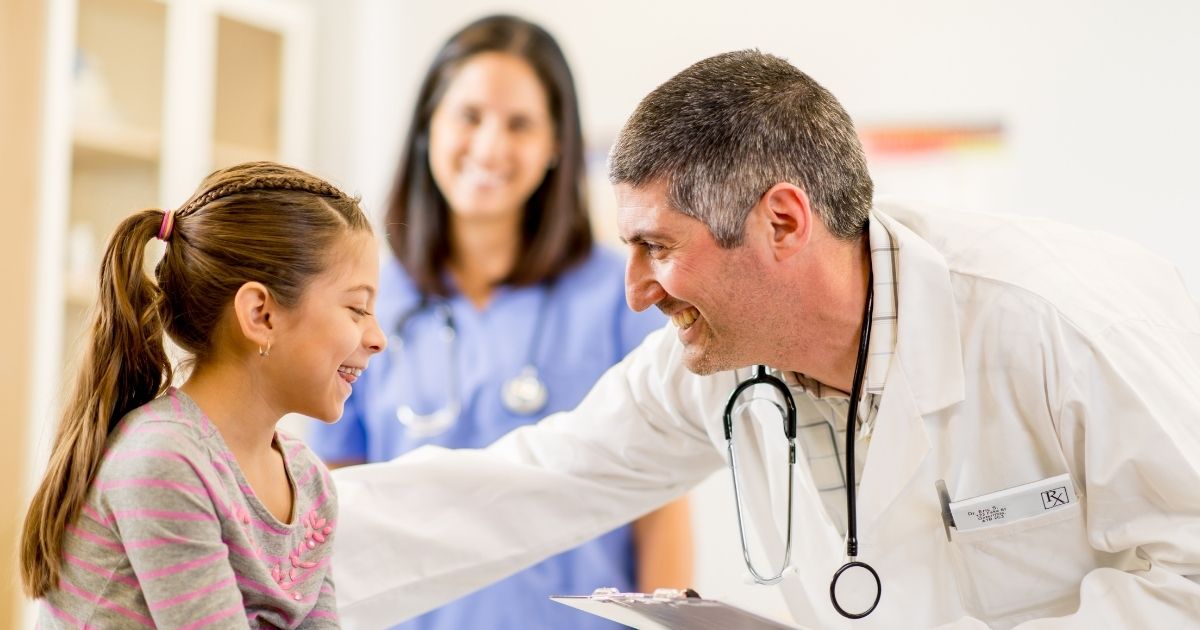Tuberous Sclerosis Complex From Bedside to Bench and Back Again

SUMMARY
Tuberous sclerosis complex (TSC) is a rare genetic disorder in which noncancerous tumors abound in important organs. For example, they may grow in the encephalon, eyes, lungs, pare, center, and kidneys. Symptoms can vary depending on the organs involved.
TSC is frequently diagnosed in a newborn or in infancy. However, in very mild cases, it may not be noticed until later in childhood or even adulthood.
Nearly cases of TSC are due to a mutation in the TSC1 or TSC2 genes. TSC appears in about 1 in 5,000 to 10,000 live births. Males and females seem to exist affected equally.
The disease is lifelong. There is no cure for TSC, but there is treatment for the symptoms caused past the growths.
Leap TO
Disorder Overview
DESCRIPTION
TSC leads to growths, or noncancerous tumors, called "hamartomas." Hamartomas can affect the function of the organ they are growing in. This touch on will be based on the size of the growth and its location. Cancerous tumors are rare in TSC.
Variability
TSC is unique for each person. It is difficult to predict who will develop growths and where they will occur. However, growths virtually commonly appear in a item set of locations. These locations include:
- Brain
- Kidneys
- Center
- Lungs
- Skin
Because of all this variation, the spectrum of clinical features can as well range from mild at one terminate to astringent or prominent at the other. For this reason, the historic period at diagnosis may vary:
- Balmy cases can result in a late diagnosis in older children and young adults
- Astringent cases can effect in an early diagnosis in infancy
Complications
Well-nigh patients with TSC will be diagnosed with other medical issues caused past the condition. Complications can include:
- Seizures
- Cognitive or learning difficulties
- Behavioral problems
- Skin abnormalities
- Kidney problems
- Lung lesions
TSC can cause serious or life-threating complications depending upon where the tumors grow and how big they are. For example:
- If growths occur in the center, they can affect blood flow
- If growths occur in the brain, they tin can cause increased force per unit area within the skull, or block flow of fluid around the encephalon
- If growths occur in the kidneys, they tin can pb to high claret pressure

SIGNS AND SYMPTOMS
TSC is diagnosed on the basis of:
- Clinical history
- Findings on physical exam
- Special scans with magnetic resonance imaging (MRI), ultrasound, and computerized tomography (CT)
Diagnosis tin be confirmed in two ways.
- TSC is confirmed when patients have two or more of the distinctive features described below.
- TSC tin can as well exist confirmed if genetic testing shows mutations in the TSC1 or TSC2 genes.
A variety of distinctive features tin confirm TSC.
These features include:
Pare abnormalities
These can appear as:
- Small areas of thickened, smooth skin called shagreen patches
- Bumps under the nails that await similar actress skin
- Patches of light-colored skin chosen ash foliage spots
- In childhood, there are often small bumps on the face that resemble acne and are chosen facial angiofibromas
Encephalon abnormalities
Growths in the brain are detected with imaging studies such as encephalon MRI.
They may include:
- Cortical tubers. Cortical tubers are typically establish throughout the brain. They are very mutual in patients with TSC. Cortical tubers can cause seizures. These seizures are, in many patients, the commencement symptom that leads to investigation of TSC.
- Giant cell astrocytomas. Giant cell astrocytomas are less-mutual cancerous tumors. They can cause problems with the menstruum of spinal fluid. This can result in increased pressure in the brain and enlargement of head size.
- Subependymal nodules. Subependymal nodules are very common. They are growths that occur along the walls of the fluid-filled pockets of encephalon known as ventricles.
Developmental delays
Some people with TSC take normal development . However, typically , people with TSC take developmental delays or intellectual disability. Developmental delays are ofttimes seen in early babyhood. They announced as delayed achievement of developmental milestones. Parents and teachers may also notice hyperactivity or behavioral bug in children with TSC.
Kidney growths
These are another common finding . B enign growths of the kidney include angiomyolipomas and renal cysts . They tin can crusade high blood pressure , back hurting , or blood in urine .
Heart tumors
These are also called cardiac rhabdomyomas . They are most often found in infants . They are diagnosed with an ultrasound of the heart (echocardiogram) . They typically shrink as infants get older, or by around age ii. H eart tumors tin obstruct claret flow in eye or cause eye rhythm issues . T hey may also remain silent , not causing whatsoever problems.
Middle findings
These mostly consist of white growths at the dorsum of the middle called retinal astrocytic hamartomas . They rarely affect vision .
Subtle findings in patients with TSC include:
- Enamel pits in the teeth
- Growths in liver
- Growths forth the gum lines
Sometimes, signs of TSC are missed. This is true particularly if
- There are very few hamartomas (growths), and they are not confined to major organs such as the brain
- A child has relatively normal or slight developmental delay
- A child does not bear witness many other signs, such as seizures
However, information technology is usually difficult to miss TSC due to the number of organs that may be involved. TSC is, in fact, often discovered with the use of ultrasound in a fetus during pregnancy.

CAUSES
About 75% to eighty% of patients with TSC accept a mutation in either theTSC1 or TSC2 gene. These genes provide instructions to brand a protein that helps control cell growth and reproduction. When these genes are affected, an individual develops the tendency to form hamartomas (growths).
Near TSC patients with a defective cistron have de novo genetic mutations. De novo mutations are spontaneous. They are new, rather than inherited from a parent. They occur in eggs, sperm, or fertilized eggs. Some TSC patients—near 20%—inherited a defective TSC1orTSC2 cistron from a mother or father.
LAB INVESTIGATIONS
Several types of lab tests are used in TSC.
These include:
Genetic testing
This is helpful in confirming a diagnosis. Nigh people with TSC have a mutation in the TSC1 or TSC2 gene s. Still, a negative genetic exam does not rule out TSC . I due north some patients, a TSC diagnosis tin can only be established clinically.
Magnetic resonance imaging (MRI)
MRI is helpful in taking detailed pictures of the encephalon. This tin help detect aberrant brain growths . It can as well be used to find lung tumors.
Ultrasound
Ultrasound tin can scan the kidneys for tumors .
Echocardiogram
An u ltrasound of the center is called an echocardiogram. It can detect rhabdomyoma, a benign tumor of the heart muscle.
Computerized tomography (CT) scan
A CT scan can look at the chest to detect lung tumor s.
Eye exam
An eye exam performed by an ophthalmo logist tin find tumors inside the eye .
Electroencephalogram (EEG)
An EEG reads the electrical activity of the brain. Information technology may exist used if a kid has seizures . Information technology tin assist identify the type and location of the seizures. This test uses painless electrodes placed on the surface of the scalp .
Tests are typically repeated either every twelvemonth or every few years:
MRI of brain
MRI browse of the brain is obtained at least once per year in children who have seizures, neurologic problems, or previous growths seen on imaging.
MRI of belly
Needed e very 1 to 3 years for evaluation of the kidneys .
Echocardiogram
N eeded every twelvemonth until whatsoever heart tumors go down in size .
Skin checks
S hould exist performed annually.
Heart exam
Should be performed annually.
EEG
R epeated based on a patient ' s seizure activeness.

TREATMENT AND THERAPIES
Treatment of TSC is based on the type and severity of the symptoms. It therefore varies from patient to patient.
Treating Seizures
Seizures in TSC patients are usually treated with standard antiseizure medications.
Some patients take a special type of seizure called infantile spasms . These patients need specific treatments.
Sometimes, seizures exercise not answer to antiseizure medications. In these cases, surgery may exist used to remove the brain tubers that may be causing them.
Treating Cancerous Growths
In rare cases, cancerous growths can occur in the brain. These growths tin block spinal fluid. They may be treated with:
- Surgery.
- Everolimus. Everolimus is a special medication with anticancer and immunity suppression properties. It tin also help reduce the size of the tubers/growths, in addition to helping reduce seizures.
Treating Other Conditions
Other TSC-related conditions that may require treatment include:
- ADHD: Medication tin help amend focus.
- Developmental filibuster and intellectual disability: Therapies and special aid in school tin help.
- Growths in kidneys and lungs: Medical and surgical treatments may be needed. Everolimus is also used to reduce the size of the growths in the kidneys.
- Vision problems: Regular heart checkups and medical or surgical interventions may exist needed.
Treatment Squad
The team involved in treating patients with TSC is usually very big.
It can include:
Neurologists
T reat seizures and monitor brain imaging studies .
Neuropsychologists
D o school and IQ testing to ensure children are receiving all the services they need to do their best in school.
Psychologists
C an be helpful for manag ing behavioral bug .
Neurosurgeons
M ay help remove seizure – causing growths or cancerous growths in the encephalon .
Nephrologists
Thousand onitor for kidney growths and subsequent issues, such as loftier blood pressure .
Cardiologists
Thou onitor heart function and any growths seen on echocardiogram .
Pulmonologists
M onitor for whatsoever lung growths or related complications .
Primary care pediatricians
Are a primary resource for all children. They can help navigate the services and referrals these children may need.

OUTLOOK
It is not possible to outgrow TSC. It is a lifelong diagnosis. Outcomes are dependent on many factors.
Childhood
Many children with TSC tin can attend schoolhouse and participate in sports and activities. It is likely that learning and evolution will be delayed. However, this will bear upon each child differently. Information technology is challenging to predict how each child will develop.
Children will likely require some assistance in school. This could include things such every bit:
- A paraprofessional to assist in education
- Adjusted testing in the classroom setting
Adulthood
Adulthood outcomes will vary based on the severity of the affliction. Often, children with TSC grow into good for you, independent adults. They tin can live full lives with the help of advisable treatments.
However, some volition continue to experience disabling seizures, developmental delay, or intellectual disability. They will require special assistance.
Family Dynamic
TSC volition touch on the family unit dynamic in several ways. It requires:
- Families to take a baseline knowledge of seizure safety
- Medications to be given at regularly scheduled times
- More than frequent doctor'south appointments
- Sometimes, more than frequent hospitalizations
The goal of handling is to help a child with TSC live a total and meaningful life both in the family setting and in the social setting.
Diet and Lifestyle
Diets such as the ketogenic diet may exist used for seizure maintenance. However, dietary and lifestyle changes practise not impact the affliction itself. Still, information technology is important for all children and adults to stay active and piece of work on healthy lifestyle choices.
Resources
Organizations
TSC Alliance
The T SC Brotherhood is dedicated to finding a cure for tuberous sclerosis complex, while improving the lives of those affected. The TS C Brotherhood was founded on the cadre belief that community is a sustaining strength in the face of hard challenges.
The TS C Alliance hosts a private Facebook group, TS C Alliance Tuberous Sclerosis Circuitous Give-and-take Group with over 10,000 members. This discussion group is made bachelor for caregivers, family members and other interested parties to discuss the various aspects of dealing with tuberous sclerosis complex.
Infantile Spasms Activeness Network
The Infantile Spasms Activity Network (ISAN) is a collaborative network of over 30 national and international entities focused on raising sensation for infantile spasms. To acquire more about the group delight visit their website .
The Brain Recovery Project: Childhood Epilepsy Surgery Foundation
The Encephalon Recovery Project (BRP) provides inquiry-based, reliable information to help parents and caregivers understand when a kid'south seizures are drug-resistant. The BRP team explains the risks and dangers of seizures and helps families counterbalance the pros and cons of the various brain surgeries to stop them. Caring BRP team members too help parents understand the medical, cognitive, and behavioral challenges a child may have through life, too as guide parents through financial and life care issues, and the IEP process. If desired, parents can connect with other families for support. The Brain Recovery Project besides hosts a private Facebook grouping, Education After Pediatric Epilepsy Surgery with over 200 members.
In addition, BRP has resources for medical professionals to help in helping clinicians aid the parents of their patients discover the resource they need after surgery. Educators and therapists will also find helpful resource and information including videos, guides, and relevant research. Patients who have undergone surgery are encouraged to annals with the Global Pediatric Epilepsy Surgery Registry to help in setting time to come research priorities.

Publications
JCN Podcast on Tuberous Sclerosis
Podcast from SAGE Neuroscience and Neurology/Periodical of Child Neurology (JCN). Dr. Alison Christy speaks with Dr. Jurriaan Peters of Boston Children'southward Hospital about their article published in JCN "The Evolution of Subclinical Seizures in Children With Tuberous Sclerosis Complex". Then Dr. Christine Park of Brooke Army Medical Center in San Antonio gives an overview of the disease. Finally, Dr. Alison Christy interviews Dr. Derek Bauer of the Academy of Virginia on their personal connectedness with the disease likewise every bit their career path.
Child Neurology Foundation (CNF) solicits resources from the customs to exist included on this webpage through an awarding procedure. CNF reserves the right to remove entities at whatever time if information is deemed inappropriate or inconsistent with the mission, vision, and values of CNF.
Research
ClinicalTrials.gov for Tuberous Sclerosis Complex are clinical trials that are recruiting or volition be recruiting. Updates are made daily, and then you are encouraged to check back ofttimes.
ClinicalTrials.gov is a database of privately and publicly funded clinical studies conducted effectually the world. This is a resource provided past the U.S. National Library of Medicine (NLM), which is an found within the National Institutes of Health (NIH). List a report does not mean it has been evaluated by the U.S. Federal Regime. Please read the NLM disclaimer for details.
Before participating in a report, y'all are encouraged to talk to your health care provider and learn nearly the risks and potential benefits .
Family Stories
A tuberous sclerosis complex (TSC) diagnosis can be overwhelming, and many people say they feel alone. " Your Journeying with Tuberous Sclerosis Complex (TSC) — Y'all Are Not Solitary ", a video from the TSC Alliance , features interviews with parents who have children with TSC as well every bit adults with TSC and TS C Alliance staff members, who each explicate why y'all are not alone in the journeying of TSC.
The information in the CNF Kid Neurology Disorder Directory is not intended to provide diagnosis, handling, or medical advice and should not be considered a substitute for advice from a healthcare professional. Content provided is for informational purposes only. CNF is not responsible for actions taken based on the information included on this webpage. Please consult with a doc or other healthcare professional regarding any medical or health related diagnosis or handling options .
References
Northrup H, Koenig MK, Pearson DA, et al. Tuberous Sclerosis Complex. 1999 Jul thirteen [Updated 2022 Apr 16]. In: Adam MP, Ardinger HH, Pagon RA, et al., editors. GeneReviews® [Internet]. Seattle (WA): University of Washington, Seattle; 1993-2021. Available from: https://www.ncbi.nlm.nih.gov/books/NBK1220/
Goodman One thousand, Lamm SH, Engel A, et al. Cortical tuber count: a biomarker indicating neurologic severity of tuberous sclerosis complex. J Child Neurol. 1997 Feb. 12(ii):85-90. PMID: 9075016; https://doi.org/10.1177/088307389701200203
Northrup H, Krueger DA. Tuberous sclerosis complex diagnostic criteria update: recommendations of the 2012 International Tuberous Sclerosis Complex Consensus Briefing. Pediatr Neurol . 2013 Oct. 49(4):243-54. PMID: 24053982; https://doi.org/10.1016/j.pediatrneurol.2013.08.001
Au KS, Williams AT, Gambello MJ, Northrup H. Molecular genetic ground of tuberous sclerosis complex: from bench to bedside. J Child Neurol. 2004 Sep;19(nine):699-709. PMID: 15563017; https://doi.org/10.1177/08830738040190091101
Stephanie Rnadle, Physician, MS, et al. Tuberous sclerosis complex: Genetics, clinical features, and diagnosis. In: UpToDate, Waltham, MA. (Accessed on June 28, 2021). https://www.uptodate.com/contents/tuberous-sclerosis-complex-genetics-clinical-features-and-diagnosis
Crino PB, Nathanson KL, Henske EP. The tuberous sclerosis complex. Northward Engl J Med. 2006 Sep 28;355(thirteen):1345-56. PMID: 17005952; https://doi.org/10.1056/NEJMra055323
Thank you to our 2022 Disorder Directory partner Jazz Pharmaceuticals. And to our 2022 partners Acadia, Aeglea, Amicus Therapeutics, bluebird bio, Eisai, Greenwich Biosciences (now Jazz Pharmaceuticals), Liva Nova, Origin, Ovid, PTC Therapeutics and UCB for their support of the Disorder Directory.
Source: https://www.childneurologyfoundation.org/disorder/tuberous-sclerosis-complex/
0 Response to "Tuberous Sclerosis Complex From Bedside to Bench and Back Again"
Post a Comment